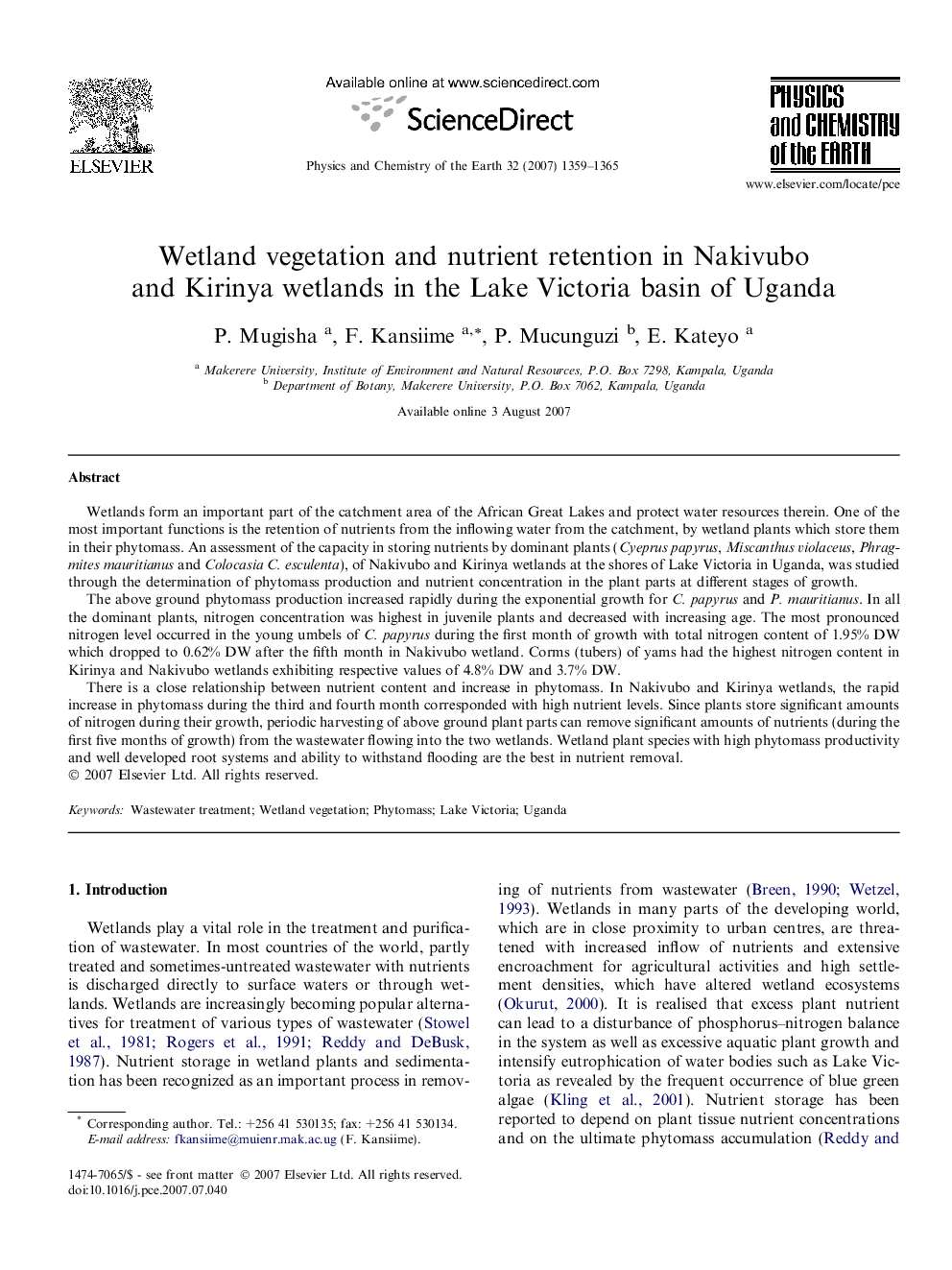| کد مقاله | کد نشریه | سال انتشار | مقاله انگلیسی | نسخه تمام متن |
|---|---|---|---|---|
| 4721842 | 1639403 | 2007 | 7 صفحه PDF | دانلود رایگان |

Wetlands form an important part of the catchment area of the African Great Lakes and protect water resources therein. One of the most important functions is the retention of nutrients from the inflowing water from the catchment, by wetland plants which store them in their phytomass. An assessment of the capacity in storing nutrients by dominant plants (Cyeprus papyrus, Miscanthus violaceus, Phragmites mauritianus and Colocasia C. esculenta), of Nakivubo and Kirinya wetlands at the shores of Lake Victoria in Uganda, was studied through the determination of phytomass production and nutrient concentration in the plant parts at different stages of growth.The above ground phytomass production increased rapidly during the exponential growth for C. papyrus and P. mauritianus. In all the dominant plants, nitrogen concentration was highest in juvenile plants and decreased with increasing age. The most pronounced nitrogen level occurred in the young umbels of C. papyrus during the first month of growth with total nitrogen content of 1.95% DW which dropped to 0.62% DW after the fifth month in Nakivubo wetland. Corms (tubers) of yams had the highest nitrogen content in Kirinya and Nakivubo wetlands exhibiting respective values of 4.8% DW and 3.7% DW.There is a close relationship between nutrient content and increase in phytomass. In Nakivubo and Kirinya wetlands, the rapid increase in phytomass during the third and fourth month corresponded with high nutrient levels. Since plants store significant amounts of nitrogen during their growth, periodic harvesting of above ground plant parts can remove significant amounts of nutrients (during the first five months of growth) from the wastewater flowing into the two wetlands. Wetland plant species with high phytomass productivity and well developed root systems and ability to withstand flooding are the best in nutrient removal.
Journal: Physics and Chemistry of the Earth, Parts A/B/C - Volume 32, Issues 15–18, 2007, Pages 1359–1365